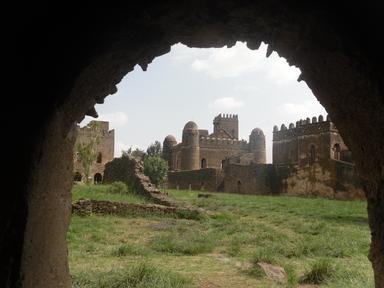Quiz Answer Key and Fun Facts
1. Addis Ababa is the capital of Ethiopia, built in an easily defensible place with a source of potable water. Originally called 'Finfinne' for the reason that the city was built at that site, what did that name mean?
2. Other than Eritrea, which broke off from Ethiopia in 1993, Ethiopia shares a border with five other countries. Which is *not* one of them?
3. Ethiopia, one of the largest countries in the world, has many rivers. Do the Blue Nile and the Black Nile, parts of the longest river in the world, originate in Ethiopia?
4. Right through Ethiopia (and that region of Africa) runs a tectonic fault line where the African plate is being split into two smaller plates due to its crashing into the Arabian plate. What name is given to this tectonic boundary?
5. Ethiopia's climate has three distinct seasons, not four. Mon Dieu! Which of the following is *not* one of them?
6. Ethiopia is landlocked. It uses Djibouti as its main port. Was it always landlocked?
7. Aw, due to the size of Ethiopia, it has many types of climate. Located about 600 kilometers from the equator, what is the predominant climate found on the western (inland) side of the country?
8. One of Ethiopia's economic strengths is its agriculture. It produced in 2020 about 90% of the world's supply of this indigenous grain, used for making injera, a traditional part of the Ethiopian meal. What grain is Ethiopia known for?
9. One of the first empires to be based in Ethiopia is that of D'mt, whose capital was at Yeha. Which region of Ethiopia, the site of a civil war that started in 2020, is Yeha located in?
10. The highest point in Ethiopia, Ras Dejen, is a point which used to be a part of an ancient caldera of a volcano. However, what happened to the northern part of the caldera?
Source: Author
LeoDaVinci
This quiz was reviewed by FunTrivia editor
agony before going online.
Any errors found in FunTrivia content are routinely corrected through our feedback system.
